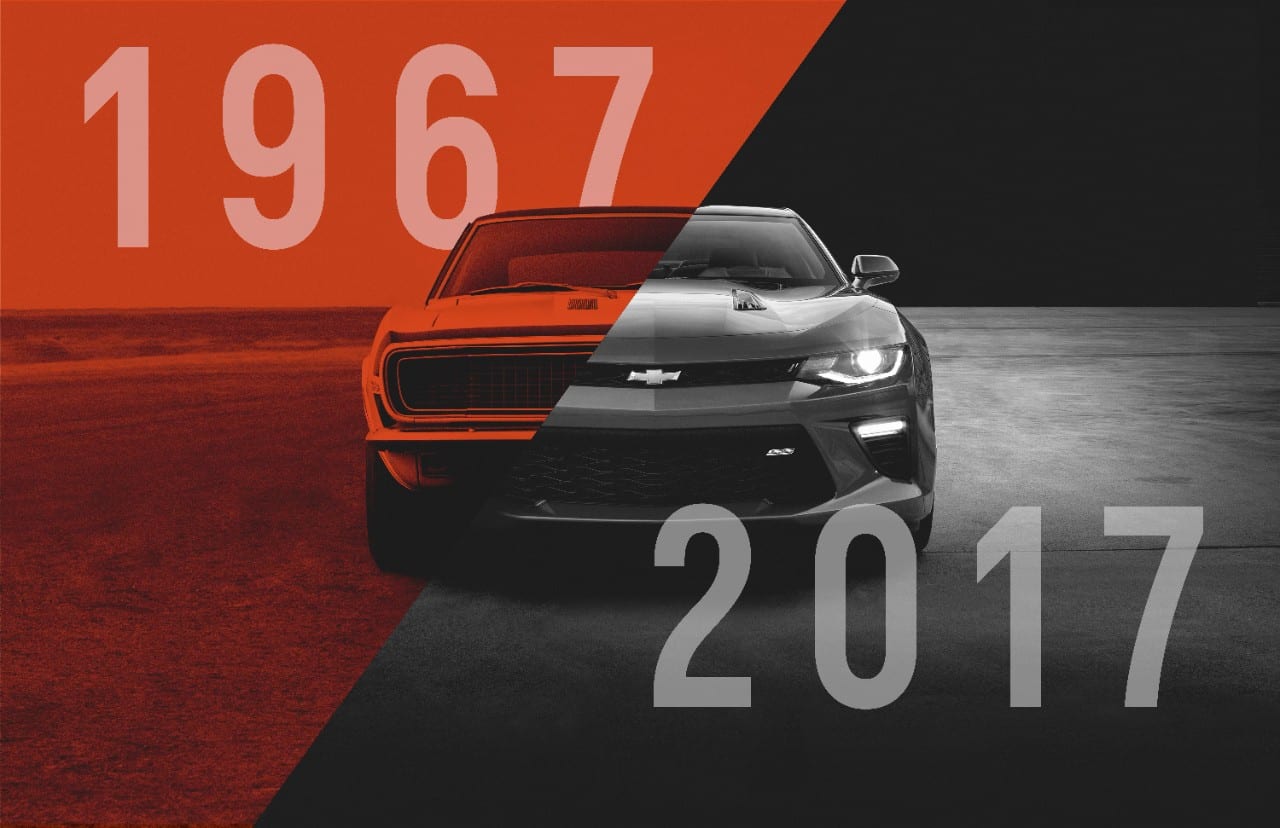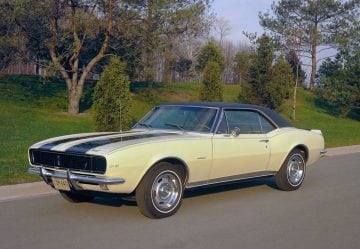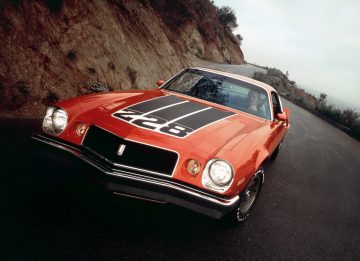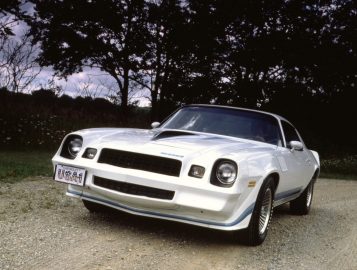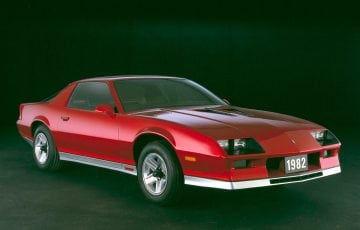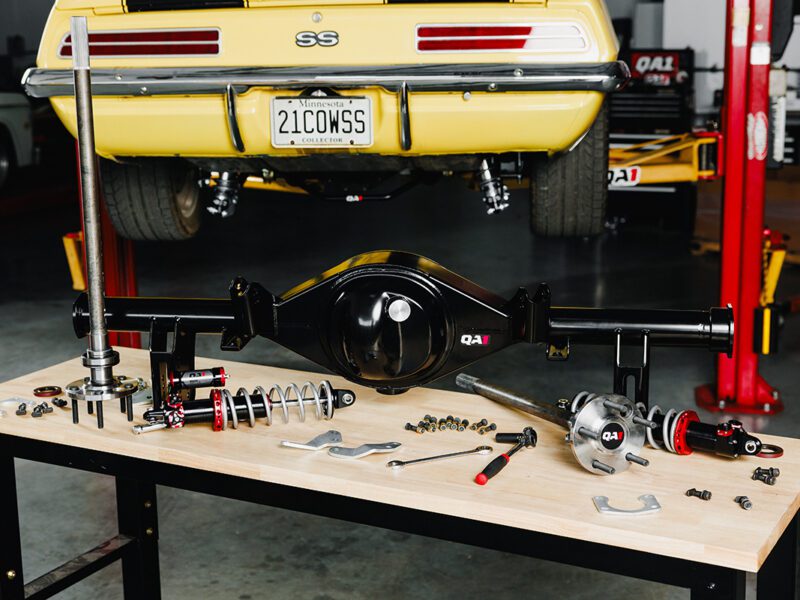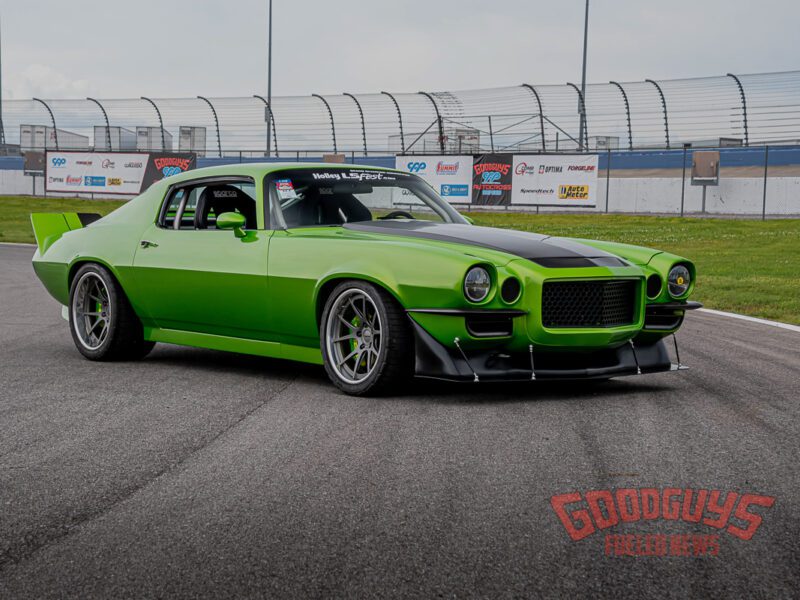Six Generations of Camaros Establish a Legacy, 1967 – 2017
Special thanks to Barry Kluczyk | Photos courtesy of General Motors and Goodguys archives
Does it really matter that there probably wouldn’t be a Camaro if the Mustang hadn’t come first? Yes, but Chevy’s answer to Ford’s original “pony car” established its street cred the moment it started rolling off the assembly line; and while it has always been a direct competitor for the Mustang, the Camaro forged its own path, while garnering a loyal following, to become an American automotive icon in its own right.
And let’s be honest, all the major manufacturers were looking at vehicles that could be more personalized and unique to satisfy the cultural force that became the Baby Boomer generation. With all due credit to Ford, the Mustang just happened to be the first to the market.
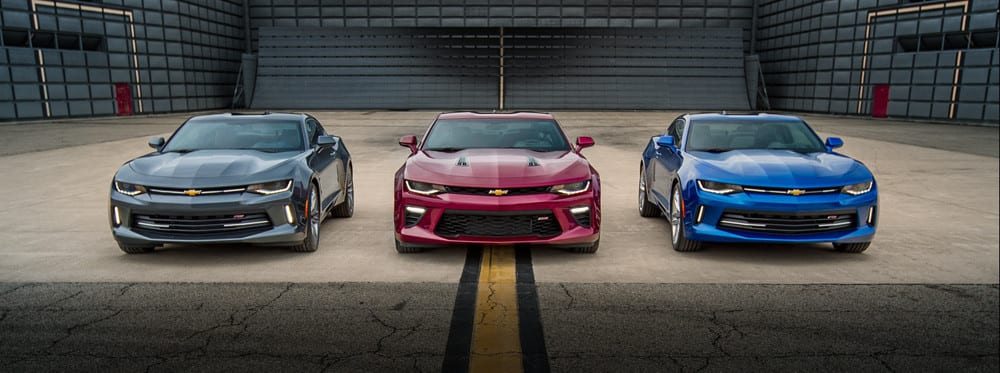
In many ways, the Camaro was probably more of a sports car than the Mustang, having been built on a dedicated architecture starting with its second generation. This enabled more creative styling combined with handling capabilities that generally exceeded its blue-oval rival, while the horsepower war between the two has traditionally been a series of give-and-take battles.
Earlier this year, Chevrolet unveiled the 2016 Camaro and with its introduction, there are new technologies and promises to establish new performance benchmarks. With the new 6th generation announced, it seemed fitting to take a look at the Camaro’s past and roll through the peaks (and valleys) of its nearly five decades on the market.
It’s been a helluva ride and we’re looking forward to what’s around the next bend.
FIRST GENERATION: 1967-69
Introduced in September 1966, the all-new Camaro was an instant hit, especially with a base price of $2,466 (the equivalent of about $18,000 today, when adjusted for inflation). The country was still coming to grips with Mustang mania and Chevy’s answer was timed just right. And like the Mustang, the original Camaro was based on an existing platform, the Chevy II, which helped Chevrolet develop and bring the car to market quicker. It also helped keep the cost down.

The 1967 Camaro SS was the first Chevrolet to offer the new 350-cid small block engine.
Nearly 221,000 Camaros were sold that first year and that included about 600 examples with a high-revving, 302 c.i. small-block coupled with a special handling package, all intended to homologate the Camaro for SCCA’s popular Trans-Am race series. Although the model wasn’t given an official name, it was known by its Z28 order code. By 1968, Z/28 emblems appeared on the fenders and the legend was born.
The Camaro’s first generation was also inextricably woven into the raging muscle car and drag racing wars. Enthusiasts and dealers alike found that a big block fit nicely between the fenders of the new pony car. Crafty dealers such as Yenko started ordering SS 350 models and then 396 versions only to pull the engine and drop in a Corvette based 427 big block.
- The Z28 debuted in 1967 to homologate the Camaro in the SCCA Trans-Am series. To meet the 305 c.i. engine limit, Chevrolet use a small-journaled 327 block with 4.00-inch bores and match it with a 3.00-inch stroke, creating the infamous 302.
- 1968 Camaros are identifiable at a glance from ’67 models by the lack of side vent windows on the doors. Underneath, the ’68 models also received staggered shocks to reduce wheel hop.
In 1969 there was a special ordering system, known simply as the Central Office Production Order, best known as COPO, that produced a number of Camaros with cast iron 427 c.i. engines. The even more rare option, thanks in part to Fred Gibb was the production of the ZL1, an all-aluminum version of the 427. The Gibb dealership ordered 50 of the exotic pony car, which also happened to be the number mandated by the NHRA for a production car to be legal in Stock Eliminator. Other dealers got wind of the plan and ordered a few more of the lighter weight Camaros and in the end a total of 69 ZL1 Camaros were produced.
For only a three year run, the first generation Camaros appeared twice as the Indy 500 pace car. The first was in 1967 followed by the 1969 race. The ’69 examples, with their Hugger Orange stripes and orange houndstooth interiors, are among the most distinguishable and recognizable special models of their era.
SECOND GENERATION: 1970-81
The Camaro’s second generation was its longest and arguably its most tumultuous. It could also be heralded as its most successful. It got off to a rocky start when a strike significantly delayed production of the all-new Camaro. In fact, many refer to the 1970 models as “1970-1/2” cars because of that.

1970 Camaro
The Camaro’s all-new structure offered a comparable wheelbase, but a slightly wider footprint and lower center of gravity. These attributes gave the car excellent handling characteristics, which it would rely on later in the generation as compression ratios and corresponding horsepower numbers plummeted.
The 1970 Z28 was renowned not only for its handling prowess, but the performance of its 360-hp LT-1 engine, and it proved to be the high-water mark for small-block performance in the Camaro. A big block was also offered through 1972 but horsepower numbers dropped in the following years as new regulations, the oil crisis of 1973 and high insurance premiums effectively killed off the traditional muscle car.
- In the ‘70s, big, bold graphics took the place of horsepower, as this ’74 Z28 shows. It was also the first year for Camaro’s bold aluminum bumpers to satisfy new federal standards. The max power rating was 245-hp.
- Camaro sales peaked in 1979, when a whopping 282,571 were sold. Nearly 85,000 of them were Z28 models – staggering num-bers when compared with auto sales today.
Along with the reduction of muscle through the ‘70s, the Camaro’s styling evolved to meet new bumper and safety standards, which involved adding ‘prominent’ aluminum bumpers front and rear, starting in 1974. By the end of the decade, these larger bumpers were covered with urethane fascia covers in place of chrome.
The funny thing about the Camaro in the 1970s was that customers didn’t seem to care about horsepower ratings. The sporty looks and agile handling kept attracting buyers despite decreasing power numbers. In fact, the Camaro enjoyed its best year ever in 1979, when 282,571 were sold, including nearly 85,000 Z28 models. The top engine that year was a 350 rated at a mere 175 horsepower.
THIRD GENERATION: 1982-92
“Perhaps more than any other generation, the third-generation Camaro was a car of its time,” said Chevrolet design chief John Cafaro, earlier this year. “You can see that influence in every detail of the car, from the aerodynamic details of the exterior, such as the ground effects on the Z28, to the introduction of digital instruments on the interior.”

The redesigned third generation Camaro embraced the high-tech 1980s. The platform launched in 1982 with a fresh angular design, rectangular head-lamps and features such as digital gauges. Pictured is a 1982 Chevrolet Camaro Berlinetta.
He was right. Nothing quite exuded the high-tech, fashion-forward ‘80s like the third-gen Camaro. It was as much a part of the era as acid-wash jeans, Members Only jackets and video arcades.
It also introduced an all-new architecture, with a contemporary strut-type front suspension, rack-and-pinion steering and more. The chassis system turned a car already renowned for its handling capability into a serious track machine. Its aggressive styling complemented greater performance capability and was actually designed to enhance downforce. It was also the first Camaro with a hatchback, another signature ’80s feature, that represented a technical achievement in design and manufacturing.
- Chevy nailed the fuel injection equation with the Tuned Port Injection system that debuted on the ’85 Camaro IROC-Z. These engines became common swaps into rods and muscle cars throughout the ‘90s, showing the desire for improved driveability and performance (and a hint of what was to come with the LS platform).
- The 1982 Z28 was the first American production car to incorporate aero-minded ground effects on the rockers. It also introduced fuel injection to the public though the Cross Fire Injection twin throttle-body arrangement which proved somewhat problematic.
Under the hood, the Camaro was offered with a four-cylinder for the very first time. Fuel injection also was introduced, enabling engineers to balance efficiency with performance. The first cross ram TBI system recalled the early racing days of the first gen Z28 but it was the Tuned Port Injection that led a performance renaissance in the Camaro, peaking at 245 horsepower and 345 lb-ft of torque in 1991 – making it the most potent Camaro since 1973.
The third-generation Camaro also introduced the iconic IROC-Z, a model based on the cars used in the so-named racing series, along the track-oriented 1LE performance suspension. (It served as the basis for a B4C-code police car model.) Four-speed automatics, five-speed sticks and ‘large’ 16-inch wheels were all introduced during the third gen’s run.
FOURTH GENERATION: 1993-2002
Performance continued to improve with the fourth-generation Camaro and while the styling was decidedly sharper and more dramatic, it represented a mostly evolutionary change over the third-generation models. The chassis layout was largely similar, although the fast-raked windshield gave the car an undeniably sleek profile.
After suffering the previous five years or so of being outgunned on the street by lighter, yet comparably powered 5.0L Mustangs, Chevy upped the ante with a 275-hp LT1 small block engine that was a full 60-horses more powerful than its lifetime rival Mustang, which was also in its fourth generation.

The fourth-generation Camaro debuted in 1993 and the car was selected as the Indy 500 pace car for the first time since 1969. The fourth-gen design was distinguished by its radically sloped windshield, which extended over nearly half of the engine.
In 1996, New Jersey-based SLP Engineering developed the SS package, which added fresh-air induction drawn through a gorgeous hood scoop, a less-restrictive exhaust, and other enhancements to give the fourth-gen Camaro a more aggressive look and up to 305 horsepower.
The Camaro’s front end was redesigned in 1998, which coincided with the introduction of the LS1 V8 engine. It was the dawn of a performance revolution, with the all new Gen 3 small block offering incredible performance and a light, all aluminum block. The fourth-gen Camaro quickly became the performance bargain of the decade.
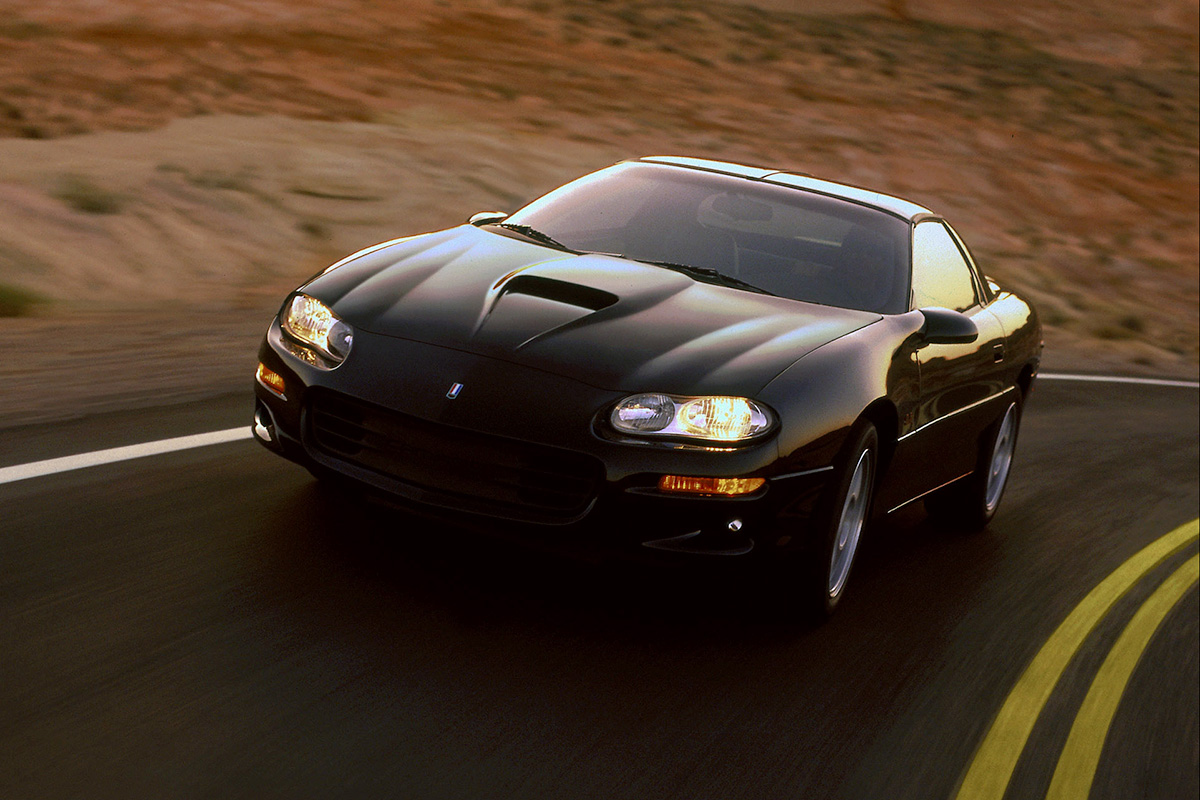
1998 Chevrolet Camaro SS
But while performance enthusiasts reveled in the fourth-gen Camaro, shifting demographics and vehicle expectations caused the Camaro base to erode. Sales dropped dramatically during this period with less than 30,000 cars sold in 2001. With the prospect of upgrading the entire car or engineering a new one to meet coming regulatory changes, GM pulled the plug at the end of the 2002 model year. The final fourth-gen Camaro was built on August 27, 2002, at its plant in Quebec.
FIFTH GENERATION: 2010-2015
Talk about a comeback! The seven years between the fourth generation’s demise and the launch of the fifth-generation (it was introduced in 2009 as a ’10 model) didn’t seem all that long but was an eternity to Camaro enthusiasts. Buyers tastes, expectations, and enthusiasm for performance evolved through those years and frankly, a little more credit is due to the Mustang.

Camaro roared back in mid-2009 as a 2010 model, introducing unmistakably retro styling that proved to be hit with customer young and old. Fifth-generation sales topped 500,000 by early 2015.
Ford had a runaway hit on its hands with the retro-style ‘05 Mustang and after witnessing the non-retro Pontiac GTO flounder, GM decided that a new Camaro would have to acknowledge its heritage on the outside. It was the right call and the fifth-gen re-introduction of the Camaro rolled into the welcoming arms and garages of enthusiasts of all generations. It also introduced the LS3 engine package, which took base power in the SS models to over 400-hp!
Higher-performance models including the 580-hp supercharged Camaro ZL1 and the 505-hp naturally aspirated Z28 have taken performance to unprecedented levels, trumping even the first-gen COPO Camaros. The Z28 has been heralded worldwide as one of the best track cars offered in production-car guise.
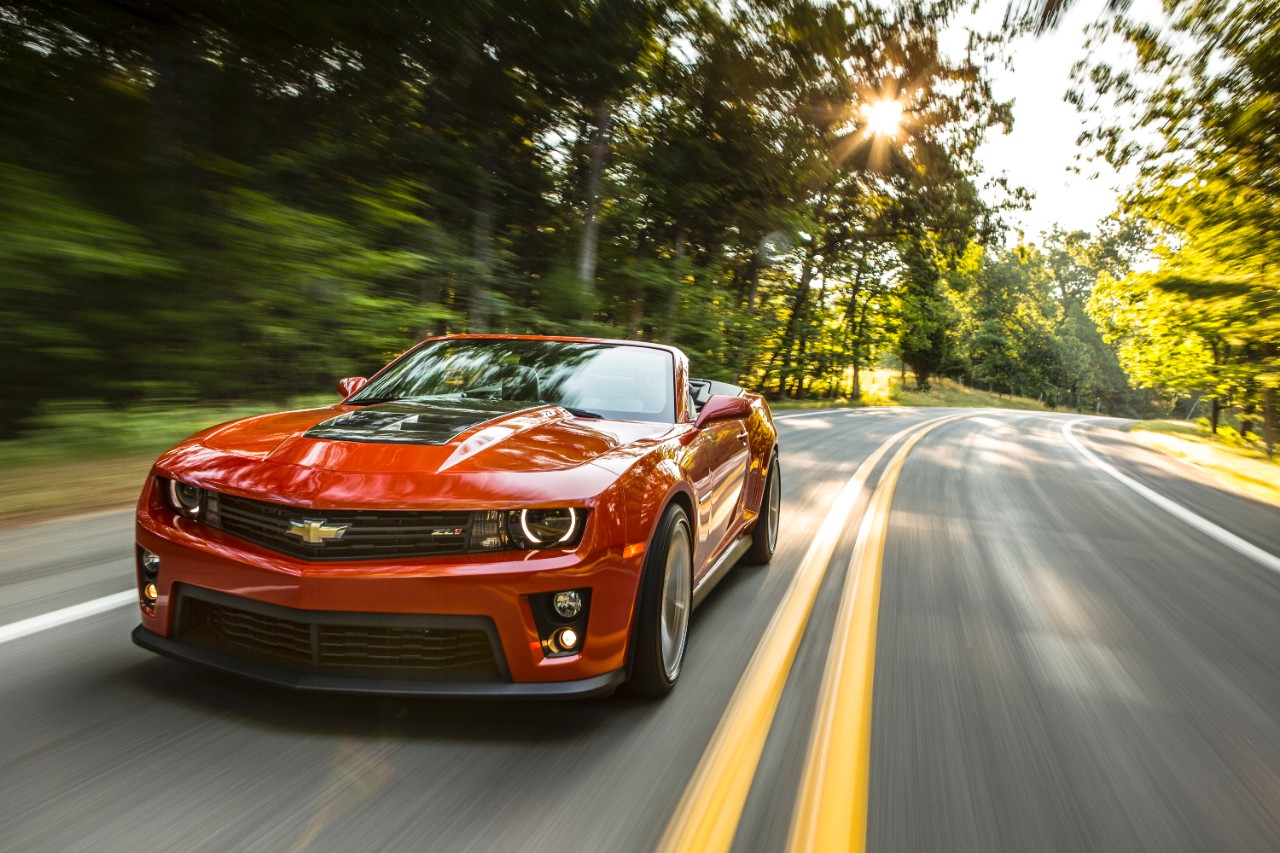
2015 Camaro ZL1 powered by GM’s 6.2-liter LSA V8 that was introduced in the Cadillac CTS-V
The fifth-gen Camaro became a cultural phenomenon as well with roles in the Transformers movies. Such awareness and marketing prowess helped Chevrolet sell more than 500,000 fifth-generation Camaros through early 2015 and outpace the Mustang for five consecutive years.
SIXTH GENERATION: 2016-?
Lighter, stronger and more powerful than its predecessor, the all-new, 2016 Camaro is built on the same architecture as the award-winning Cadillac ATS – and that’s as good as it gets from GM. The styling is a bit evolutionary but everything under the skin is new.
The engine lineup includes a turbocharged 2.0L 4-cylinder rated at 275-hp, which is more than any Camaro V8 offered between 1973 and 1996, and there’s also a V6 rated at 335-hp. The 2016 Camaro SS features the Gen 5 small block LT1 engine that pumps out 455-hp and equal torque, making it the most powerful Camaro SS in the car’s history.

In May 2015, Chevrolet introduced the sixth-generation, 2016 Camaro. It’s built on a lighter, stronger architecture and is about 200 pounds lighter than the fifth-gen car, while offering more power – a welcomed combination!
Dynamically, the sixth-generation Camaro exceeds the fifth-generation in just about every measure, but whether it will exceed it in sales and cultural influence remains to be seen.
Regardless, it advances the nearly 50-year legacy of one of the most iconic cars in American history. It’s the attainable sports car of the common man and here’s to the next half-century!
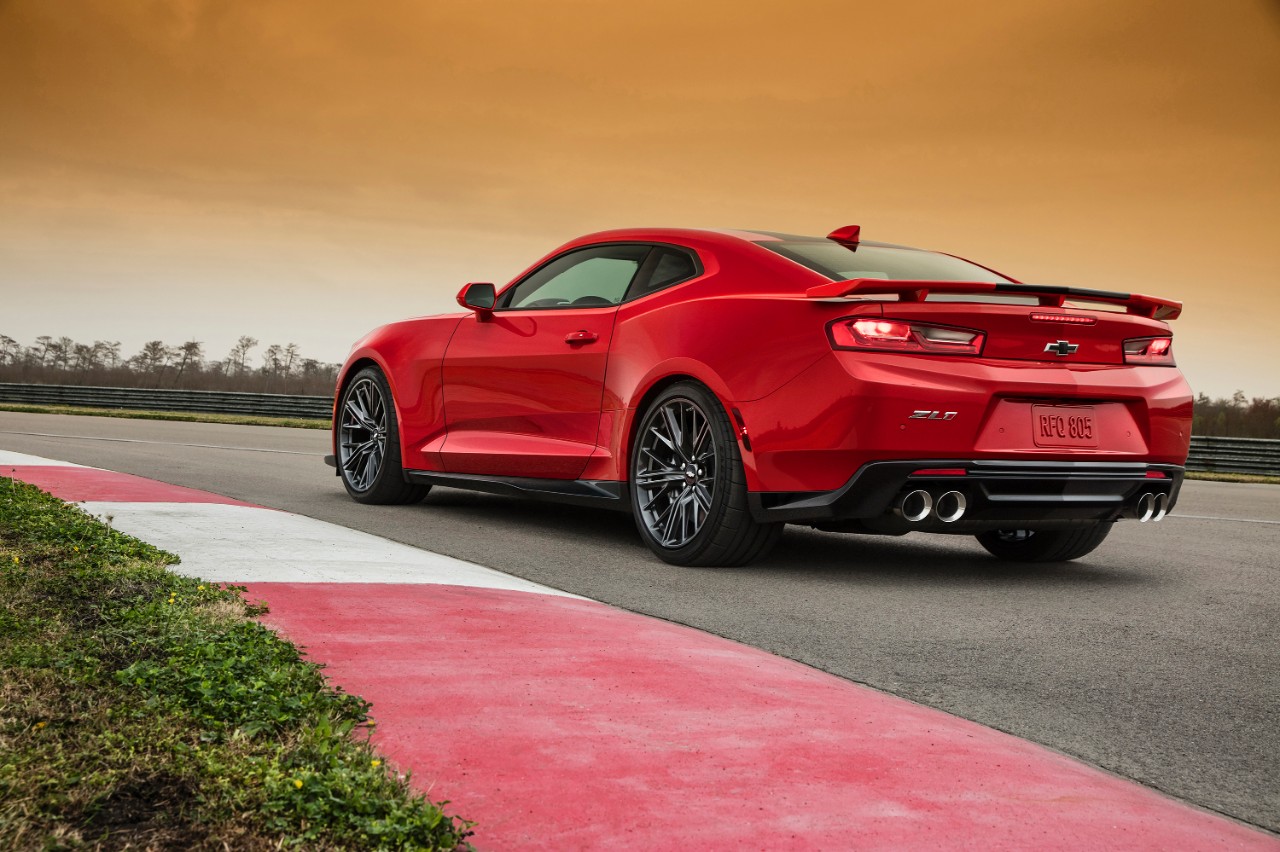
And the hits keep on rolling. Announced this week is the 2017 Camaro ZL1 with power that rivals the Z06 Corvette. Under the hood is a 650-horsepower supercharged LT4 6.2L V-8 engine. A 220 pound weight reduction, Magnetic Ride suspension, and an electronic limited-slip differential enable the most powerful Camaro to dash from zero to 60 mph in 3.2 seconds, cover the quarter mile in 11.4 seconds at 127 mph, and 1.02 g max cornering force.
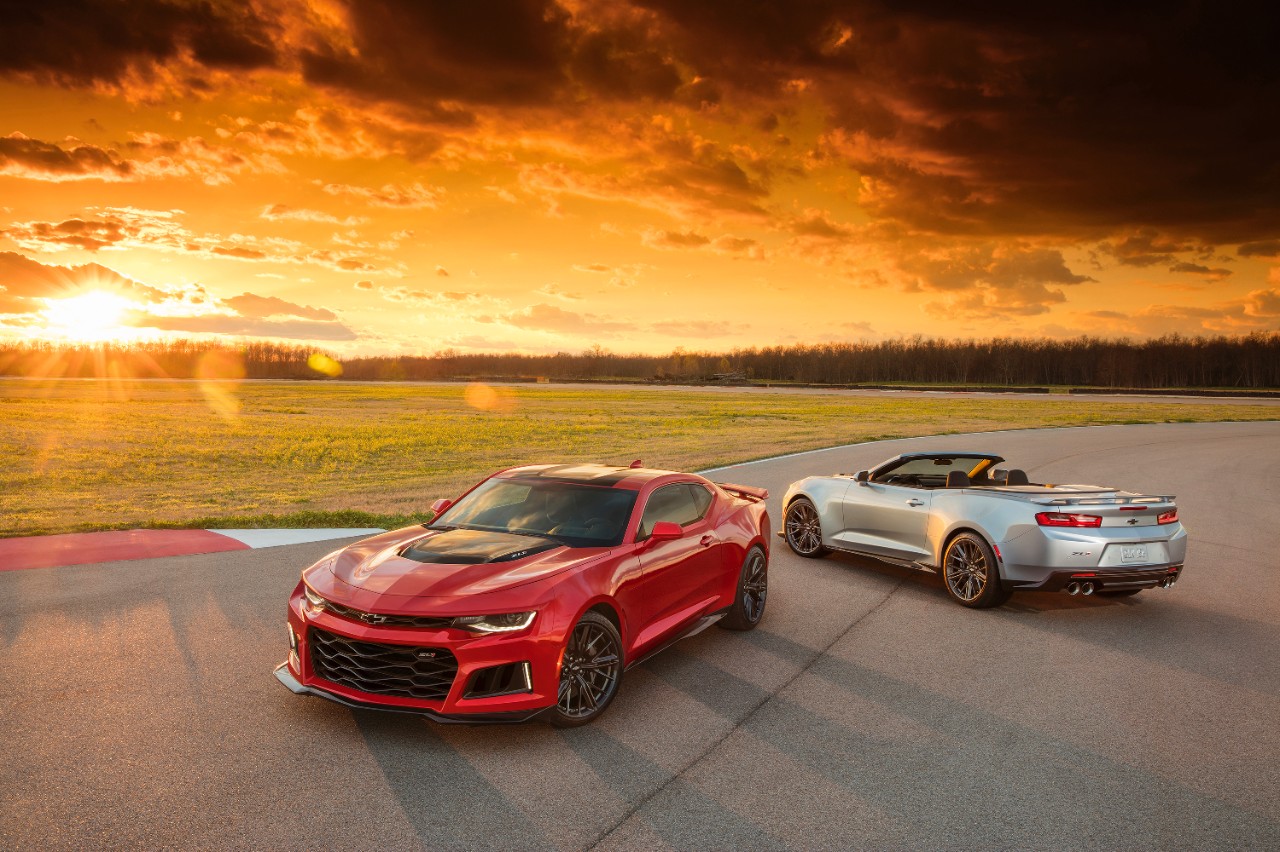
2017 Camaro ZL1
GM will commemorate the Camaro’s 50th anniversary this summer during the Woodward Dream Cruise presented by Chevrolet.
The activities include:
- A celebration at and tours of the Lansing Grand River plant, where the Camaro is built, on Aug. 18
“Camaros and Coffee” in Detroit, on Aug. 19 - A special Camaro heritage display at Chevrolet’s site for the Woodward Dream Cruise, on Aug. 20.
- Chevrolet’s Woodward Dream Cruise display will include rare and milestone examples from the car’s six generations, including the all-new 2017 Camaro ZL1 and 1LE models.
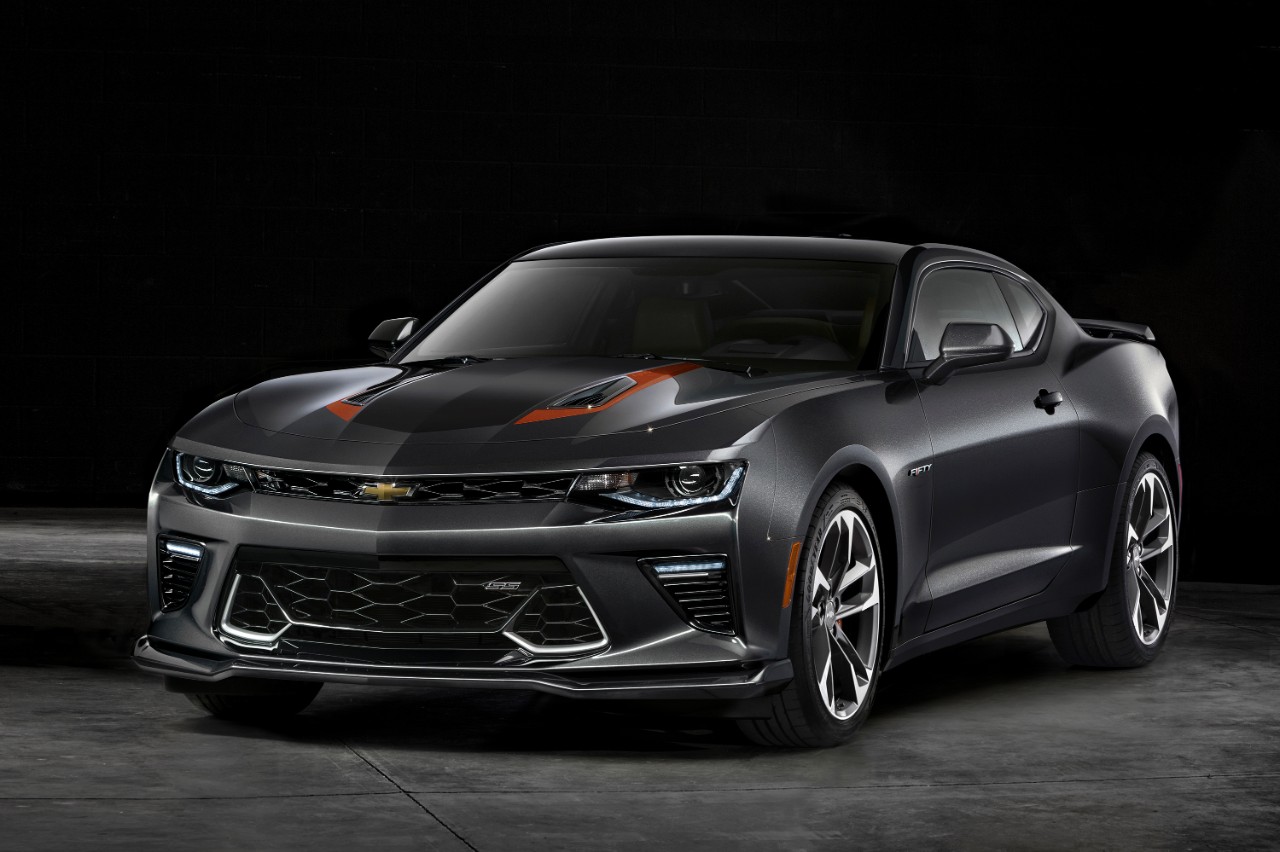
2017 Camaro 50th Anniversary Edition
The 2017 Camaro 50th Anniversary Special Edition is available summer 2016 on 2LT and 2SS coupe or convertible models. The Special Edition features a Nightfall Gray exterior, unique 20-inch wheels and center caps, orange stripe package and a black interior with suede accents and orange stitching. Distinct 50th Anniversary badging treatment is featured on seatbacks, the steering wheel badge and illuminated sill plates. For the 2017 model year, every Camaro built will feature a special 50th Anniversary badge.

